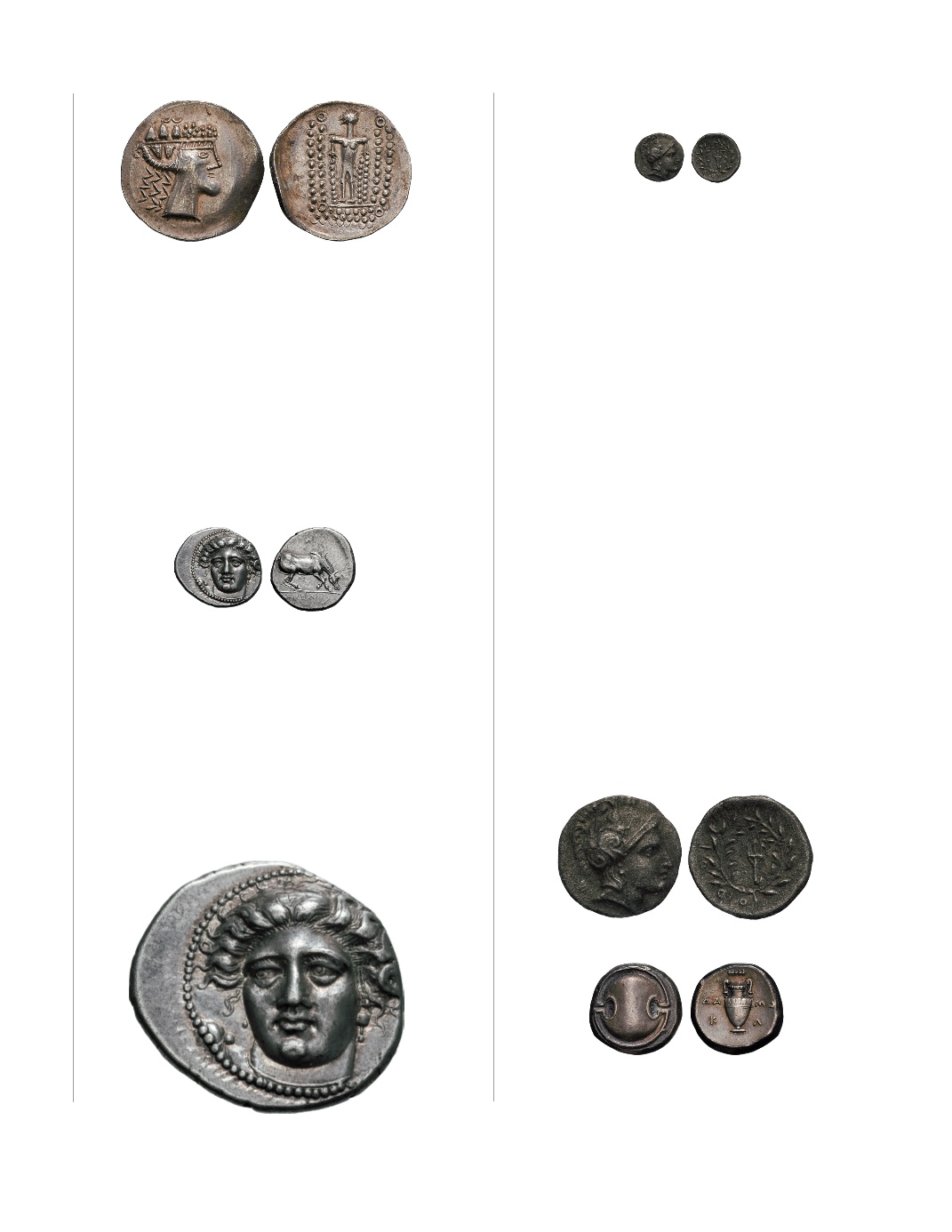

15
35.
Eastern Europe, Imitation of Thasos.
2nd-1st cen-
tury BC. Tetradrachm, 15.97g (11h). Obv: Stylized
head of Dionysos right, snake-like braid emerging
from back of head. Rx: Stylized, schematic Herakles
standing facing; inscription rendered as vertical and
horizontal rows of dots. Göbl OTA Class V/6. Slg.
Lanz--. Lukanc--. Mint State
$1,250
Ex Lanz 159, 8 December 2014, lot 6
.
Wonderful late Celtic style, strongly reminiscent of
the art of Picasso. Rare and important variety
.
Plate Coin in Berk’s 100 Greatest Book
36.
Thessaly. Larissa.
c. 400-370 BC. Drachm,
6.07g (7h). Obv: Facing head of nymph Larissa.
Rx: ΛΑΡΙΣΑ Horse grazing right. H.J. Berk, 100
Greatest Ancient Coins, p. 44 (this coin). Lorber in
Florilegium Numismaticum, p. 277, fig. 17.1(a). Cf.
BCD 1141. Lush depiction of nymph with vivid,
fluttering eyelashes. Toned EF
$7,000
Plate coin in Harlan J. Berk’s “100 Greatest
Ancient Coins”, p. 44. Ex Gemini 12, 11 January
2015, lot 104. Ex Gorny 52, 6 November 1990, lot
216. Ex Leu 50, 25 April 1990, lot 129
.
2nd Known Obol of Orthos from BCD collection
37.
Orthos.
Mid 4th century BC. Obol, 0.86g (10h).
Obv: Head of Athena right. Rx: Trident within olive
wreath; ΟΡΘΙ around wreath to left. Unpublished.
About EF
$500
“The city has been known as Orthe to coin collec-
tors because of a mistake in Rogers, The Copper
Coinage of Thessaly, confusing it with the acropolis
of Phalanna. For the correct name see An Inventory
of Archaic and Classical Poleis, p. 698. No silver
was known for this city up to very recently and this
obol is the second known precious metal coin of
this mint. For the other see Gorny & Mosch 236,
7 March 2016, lot 177e, a coin from the same pair
of dies. Stylistically posterior to the earliest issue
(BCD Thessaly 496), this obol is so close to the
subsequent bronzes (BCD 497 or BCD 1219) that
one could claim the Athena obverse dies are from
the same hand. At any rate, the ‘mid 4th century
BC’ date proposed by Walker for these bronze seems
about right for the silver obols as well. Quoting
Walker again (for Pagasai, Nomos 4, note to lot
1224): ‘the coinage… must have only been issued
out of civic pride, as a means for the city’s citizens
to pay for small purchases using their ‘own’ money,
rather than the ‘foreign’ coins from other Thessalian
cities…’. This could equally well apply to Orthos
and the precious metal source could be the dona-
tion of a wealthy citizen or the local council making
available obsolete silver utensils belonging to the
city’s treasury”. --BCD
.
38.
Boeotia. Thebes.
c. 395-338 BC. Stater, 12.20g
(11h). Obv: Boeotian shield. Rx: Amphora, club
above; ΔA-MO/K-Λ in two lines across field. BCD
578. Hepworth 26. BM 131. Toned EF
$1,000
Enlargement
Enlargement


















